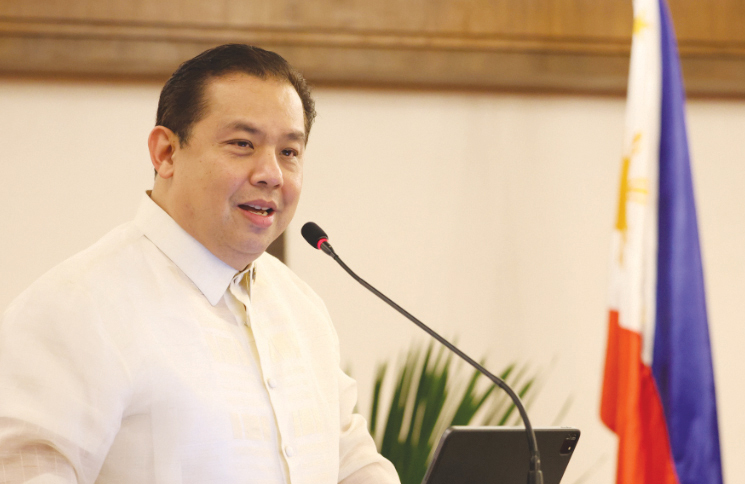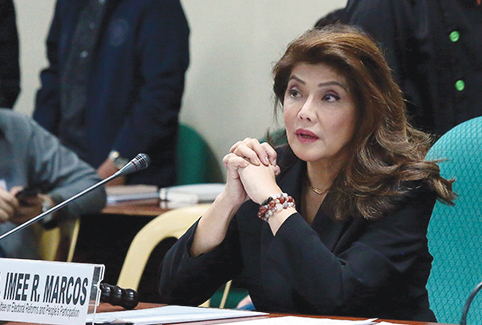How to properly change the Constitution
The issues surrounding the latest attempt at Chacha
At A Glance
- Pwede bang ganon na papalitan na lang ang Konstitusyon, sila lang ang nag-uusap? Ang labo naman.—Senator Imee Marcos

Social and mainstream media are rife with stories on the proposed changes to the 1987 Constitution. Some fear moves to get the numbers from a people’s initiative to amend certain provisions in the constitutions may give too much power to members of the lower house, rendering powers of the Senate diminished.
A few months ago, House Speaker Martin Romualdez announced plans to amend economic provisions in the 1987 Constitution. He says current economic provisions are “outdated and restrictive” and need to me amended to “attract more foreign investments, create jobs, open income opportunities for our people, and spur development.”
The economic provisions refer to restrictions on foreign ownership and investment in specific industries. These provisions are found in Article XII of the 1987 Constitution of the Philippines. The key sections include Section 2 pertaining to the sole supervision of “exploration, development, and utilization of natural resources” to the State. This provision allows foreign involvement only if the joint partnership with Filipino citizens and corporations owns at least 60 percent of the joint venture.

Sections 10 and 11: Pertaining to ownership and management of mass media and educational institutions, emphasizing the role of Filipino ownership and control.
Section 14: Pertaining to restriction of foreign ownership of land
Section 15: This section mandates the State to recognize the vital role of communication and information in nation-building and stresses the need to guarantee the protection of the rights of media practitioners.
Romualdez pointed out, “Although these provisions were drafted with patriotic intentions, these regulations have unintended adverse consequences, such as limiting job creation, among others.” He hopes by easing restrictions on foreign ownership this would allow more foreign investments and transfer of technology to take place.
There are three ways to amend the Constitution. According to the 1987 Philippine Constitution, specifically in Article XVII, Section 1-2, amendments to the Constitution may be proposed by: Congress (a vote of ¾ of its members) and a Constitutional Convention (convened by a vote of 2/3 of all the members of congress). Changes to the Constitution can also be made by way of a People’s Initiative. A people’s initiative is where the Filipino people can directly propose amendments to the Constitution. For it to succeed will require 12 percent of the total number of registered voters nationwide (in every legislative district) signing a petition for the initiative; three percent registered voters in every legislative district must be represented and must endorse the petition in order to ensure the proposed changes in the constitution have “substantial and widespread support.”
It must be noted that there is a difference between amending the Constitution proposed by Congress and revision of the Constitution. The former will need a vote of ¾ of all its members while the latter needs 2/3 of all its members.
To revise the entire constitution—changing the fundamental structure or form of government will involve a constitution convention (ConCon). A ConCon will be made up of elected delegates specifically tasked in changing the constitution. The mechanism, scope, proposed changes will all be threshed out beforehand via legislation or resolution that will call for a ConCon.
In recent days, concerned citizens have flooded social media with reports along with photos of documents they are asked to affix their signature on, reportedly endorsing unbeknown to them, a People’s Initiative, in exchange for ayudas or some other form of aid or support. According to those concerned at the very least, there must be some assurance from Congress that they will not extend their scope of amending economic provisions to areas pertaining to changes in the structure and powers of government, in particular provisions stated in Article XVII (Amendments and Revisions) of the 1987 Constitution which some have long suspected is the root behind the People’s Initiative to begin with.
Article XVII lists down the specific procedures for proposing changes in form of government in the Philippines. The People’s Initiative may not have the power to change the fundamental structure of government, including changing the form of government, but it can amend provisions pertaining to the mechanics in voting, in this case, the impact of the Senate on matters of constitutional amendments or revisions.
From what I gather it is the wording in the provision that some claim the lower house would like to amend. Apparently, the balance of power between the lower and upper chamber of congress in matters of constitutional changes like changing the form of government in the Philippines in particular, lies in the words “by a vote of 2/3 of all the Members of Congress” which, if some reports are to be believed, the lower house would like to amend to “voting jointly.”
In the Philippines, Congress consists of two chambers the upper house (Senate) and the lower house (House of Representatives). When the constitution states “upon the vote of 2/3 of all its members” this means, each chamber will need to get the 2/3 votes from their respective chambers to fulfill the “upon 2/3 vote of all members” requirement for any charter change to take place.
For example, if there are 300 members in the House of Representatives and 24 senators, the total membership of Congress would be 324. To meet the two-thirds requirement, it would mean that at least 216 members in the House of Representatives and at least 16 senators would need to vote in favor. If the concerns coming out of social media and mainstream media are to go by, if the provisions in Article XVII is amended, changing the words “upon the vote of 2/3 of its members” to members “voting jointly,” this would mean members of both chambers will be given one vote each regardless of how many members there are in each house, rendering the weight of the Senate less, in matters of, among others, constitutional changes. This possible scenario has prompted members of the Senate to take a stand on proposed Charter Change or amendments of the constitution as report of an on-going people’s initiative loom in the distance. Senator Imee R. Marcos argued, “Pwede bang ganon na papalitan na lang ang Konstitusyon, sila lang ang nag-uusap? Ang labo naman. (Can they just change the Constitution among themselves? That’s wrong.)

The scenarios discussed above, in my opinion, may be coming from a concern of a possible abuse of power, a strong protective sense of national patrimony (given the possibility of exploitation of the country’s resources by foreign companies or individuals), a threat to the checks and balances imbedded in our Constitution, and a wariness against a lack of transparency when it comes to politics in the country and It may even come from trauma perhaps of politicians wanting to remain in power long after their mandate. Time will tell. I still have hope for humanity. And I encourage, so should you!